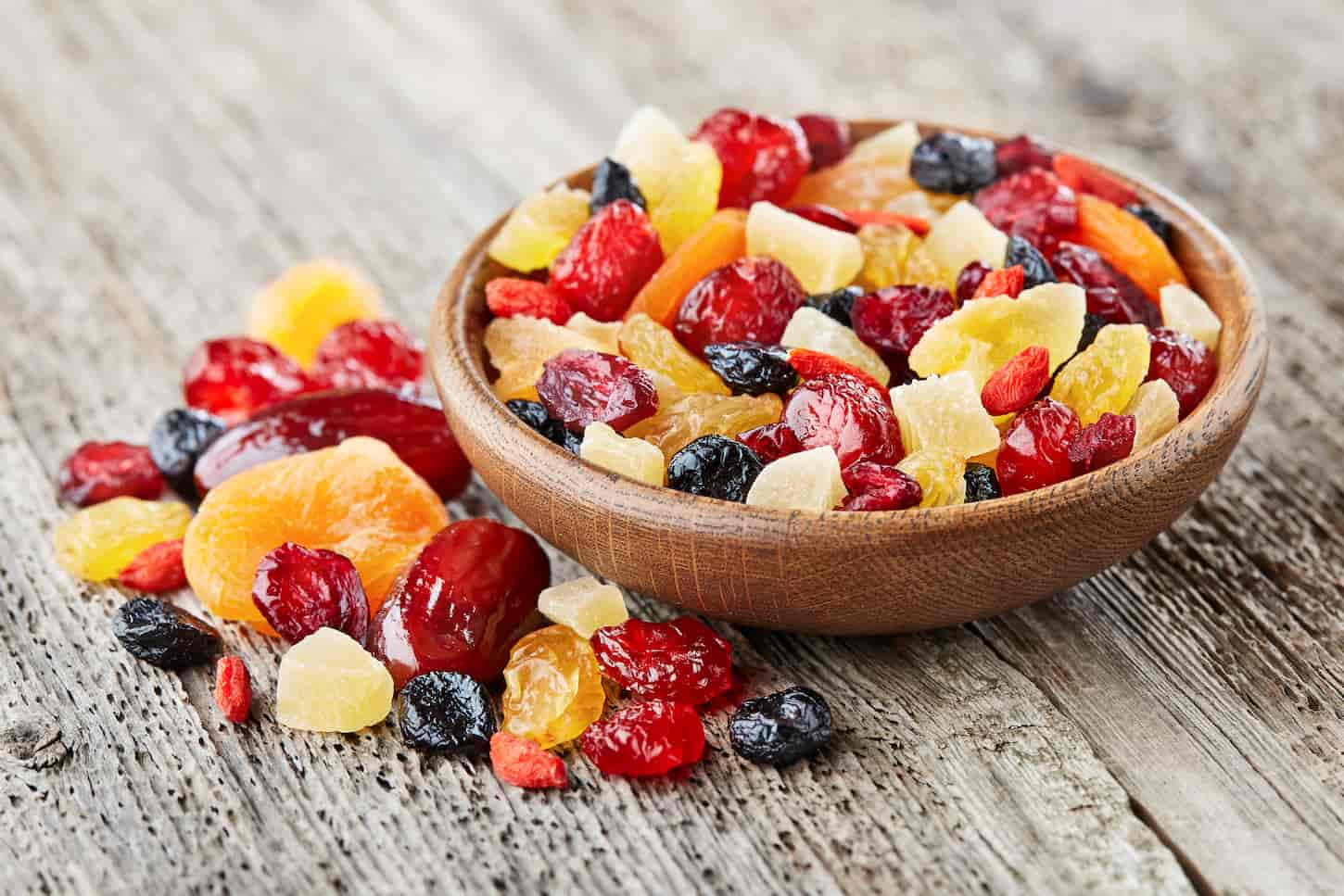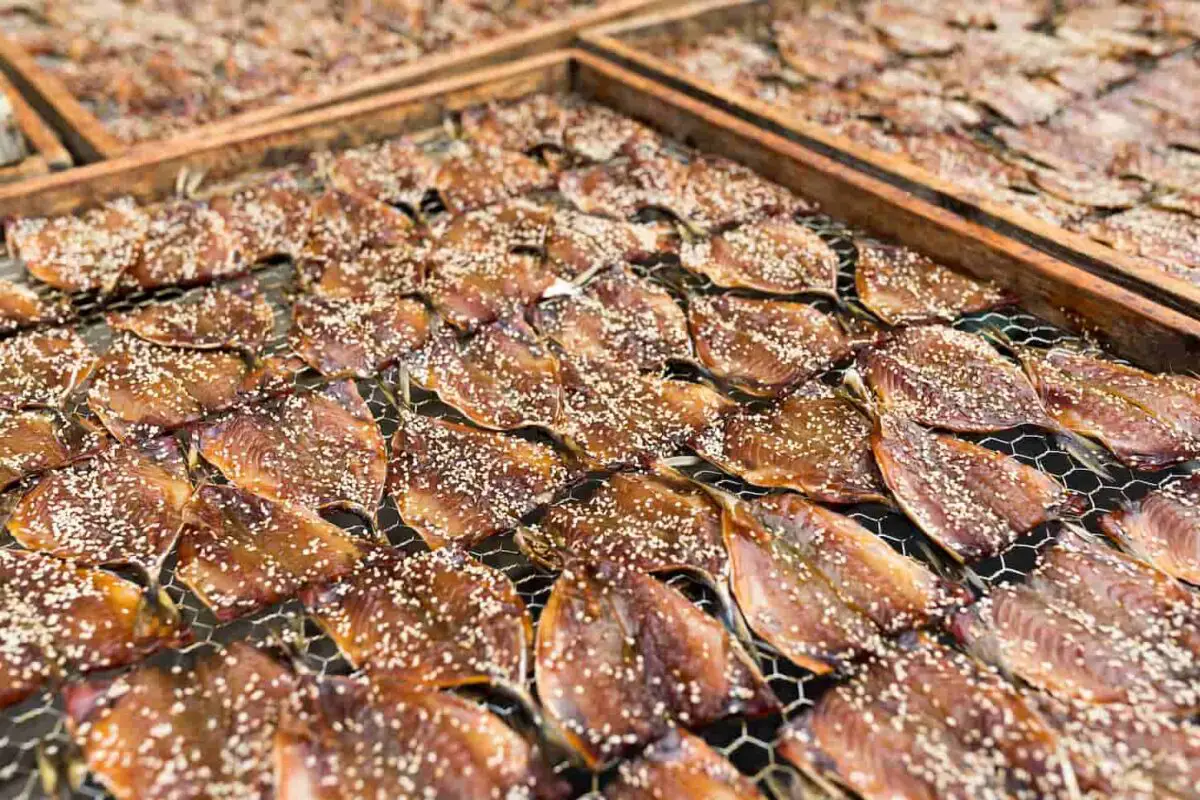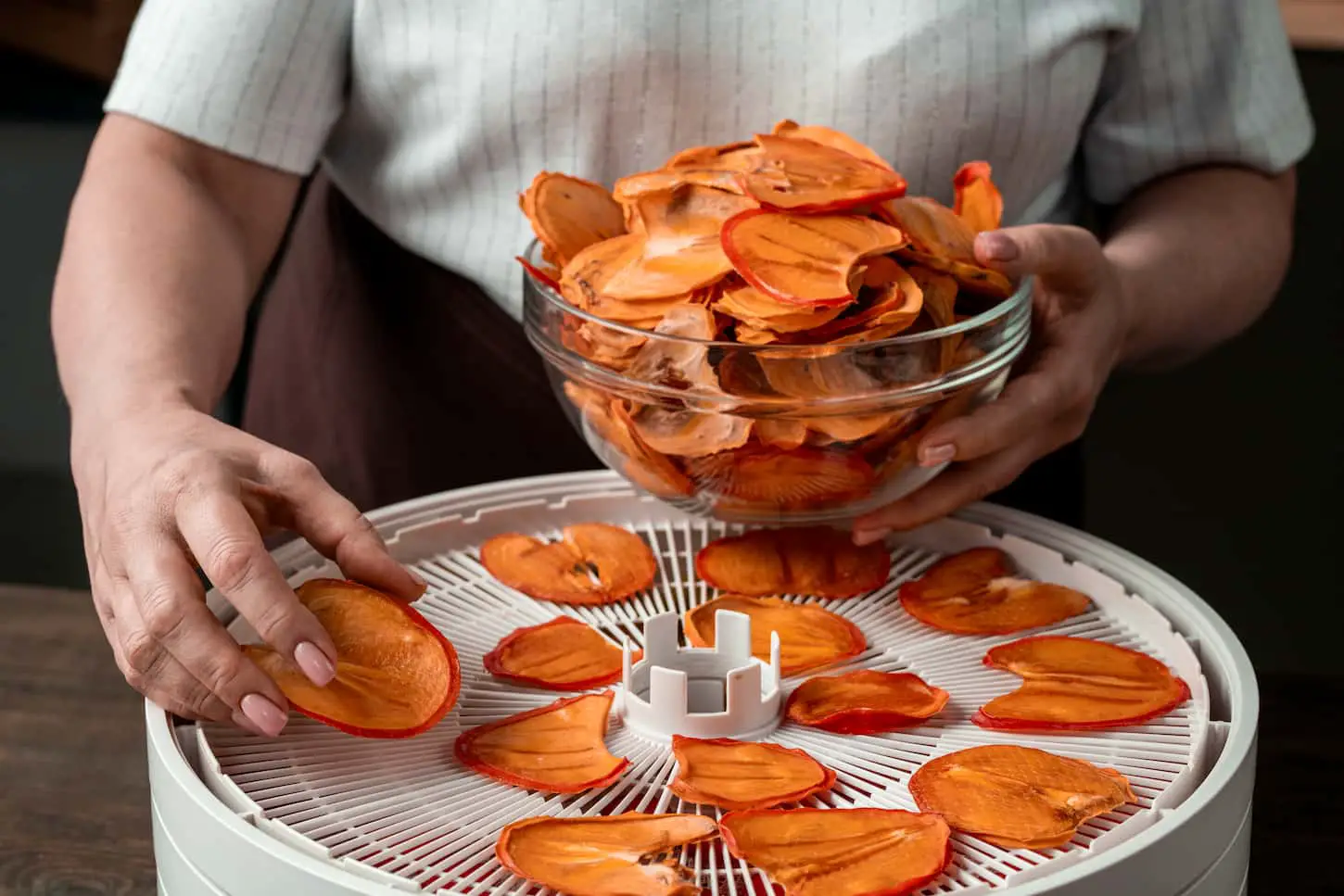Although it loses some of its taste, dehydrating food is the best long-term preservation method. Storing dehydrated food properly will make it last for a long time. But for how long exactly?
Most dehydrated foods can last for at least six months if stored properly. Some dehydrated foods can last more than ten years, perhaps up to twenty-five years. This depends on the type of food and storage conditions, and the answer does not apply to all food groups.
To ensure we know the best option, let’s look at all the different factors affecting the shelf life of food, how other food groups respond to them, and how long food can truly last if stored well.

How Long Does Dehydrated Food Last?
Depending on the food and storage conditions, different dehydrated foods have various expiration times. Generally, dried fruits can last about or up to a year. Jerky can last two weeks, and vegetables last 6 to 12 months if stored properly in a cool, dry, dark pantry.
The general answer to this question isn’t satisfying, as the actual lifetime of dried food depends on several environmental factors, storage methods, and, most importantly – the type of food.
Factors Affecting the Shelf-Life of Dehydrated Food
The most important factors are moisture content, oxygen exposure, storage temperature, light exposure, storage methods, the type of container, and the type of food itself.
We’ll be breaking these down and explaining how they affect our food.
Moisture content
Regarding dehydrated foods, the moisture content is easily the most important storage factor. Dehydration means no moisture since every drop of water is removed from the food.
If the food gets into contact with moisture, it will rehydrate (to a degree) and start developing bacteria and yeast, among other things.
Some dry foods, such as berries, are often rehydrated before being used in meals – this is done by covering them with water. However, this is done on purpose, as we need them to plump up again to put them on a cake or make a milkshake.
They must be stored in proper containers and dry storage space to prevent dehydrated foods from coming into contact with moisture (found in the air and can’t be avoided).
If any food comes into contact with moisture, we must eat it before it spoils.
Oxygen exposure
Oxygen is generally the most important factor for decomposing all matter, as it causes food degradation and is necessary for aerobic bacteria to decompose food. Oxygen-loving bacteria cannot survive without oxygen, and food degradation is slowed.
Some microorganisms don’t need oxygen to live and break down food, as they live off nitrogen and phosphorus (among other nutrients) to survive, but these organisms, parasites, and pathogens don’t typically live in your pantry and, therefore, won’t pose a problem. Plus, they let off a ton of sulfur and other stinky smells, so it’s pretty obvious when anaerobic decomposition has happened. You’ll be able to smell it, trust me.
If we cut off their access to oxygen – the aerobic (oxygen-loving) bacteria die. Anaerobic decomposition also exists, so it’s important to know that you must always do a smell test. However, without oxygen, the food won’t degrade nearly as fast. It practically stops.
Since oxygen is everywhere, even in the freezer and pantry, we’ll need airtight bags and a vacuum sealer to create a vacuum. That way, we’re safe from aerobic decomposition.
Temperature
At low temperatures, decomposing microorganisms become inactive. However, as the temperature increases, their activity rate increases as well.
To prevent this, we keep our food in the fridge or in the freezer, where microorganisms are immobilized. If we take food out and leave it at room temperature, the organisms will quickly come out of hibernation and start decomposing food.
Bacteria are also very vulnerable to hot temperatures, which is why we cook food before eating it – it kills the microorganisms.
Now, some bacteria live in extreme temperatures (think underwater volcanoes and in the freezing temperatures of the deep sea). However, they can’t travel to your pantry, so we’re probably pretty safe from those.
Light exposure
Aside from raising the temperature, light exposure ruins food by degrading vitamins, riboflavin, and other nutritional constituents, while it also causes discoloration and loss of taste.
For example, if we leave it out, this happens with a banana peel.
Unlike moisture, temperature, and oxygen, light isn’t detrimental to food as it doesn’t make it inedible, but light does cause foods to lose nutrients. Foods that have lost enough nutrients won’t taste as good as their fresh counterparts.
Shelf Life of Different Types of Dehydrated Food
Fruits are the most popular dried foods, with bananas, carious berries, citrus peels, plums, and apples being the most common dried fruits. Dehydrated fruits can last between six and twelve months or more if stored properly, depending on storage conditions.
Fruits, vegetables, meat, grains, beans, and nuts all have different expiration dates when dehydrated, and the previously mentioned factors affect them differently and are not equally important for all foods.
Let’s look at the expected shelf life and see how these factors affect them.
Fruits
Fruits are the most popular dried foods, with bananas, various berries, citrus peels, plums, and apples being the most common dried fruits. If stored properly, dehydrated fruits can last between six and twelve months.
However, this only applies to pantries – storing fruit at 60°F will make them last for about a year. If we store dehydrated fruit in a freezer, they can definitely last longer, perhaps even a few years.
Fruit leathers are another story – they’re usually dried for short-term storage and last about a month at 60°F.
Out of all food groups, fruit is most susceptible to moisture, so we have to make sure to use airtight containers that won’t let any moisture in. If we get that base covered, the fruit will last for a long time. Dried berries are especially nice to have on hand.
If we treat dried fruits with sulfur, they shouldn’t be canned or come in contact with any sort of metal. Instead of canning, use airtight bags or glass containers to store them.

Vegetables
Asparagus, beets, carrots, peppers, eggplants, onions, tomatoes, and squash are all very popular when dried. Although they can last long, vegetables usually do not last as long as fruits.
Stored at 60°F, dried veggies will last less than a year. You can prolong their shelf life by keeping them in a freezer. If any vegetables start smelling, throwing them away is important – we’re protecting the healthy vegetables that way.
Meats
The only types of meat that are dried are meat jerky and sausages. If stored in an airtight plastic bag, dry jerky lasts about two weeks at 60°F. Storing it in a fridge, however, will make it last for up to six months. Depending on the process and other factors, some dried meats can last longer.
Commercially made jerky that’s freeze-dried can last for more than ten years. The jerky we make at home doesn’t last very long, mostly because we eat it quickly. But it’s delicious and easy to dehydrate in the oven.
Smoked and dried sausage can last up to two months if not sealed, but vacuuming it in an airtight container and keeping it in a cold, dark room will last at least six months.
The best option is freezer storage, as frozen jerky can last a year. As we can see, meat isn’t as long-lasting as fruits and vegetables since it’s a breeding ground for bacteria.
Out of all dry food groups, dry meats are the most vulnerable. If there’s any moisture, oxygen exposure, or rise in temperature, dried meats will go bad very quickly.

Fish
Fish is not dehydrated as often as other food groups because of its high-fat content, making it prone to spoiling. There is no set time for storing fish safely – if frozen, it can be stored for a long time.
It’s recommended to store fish at a temperature between 35 and 39°F. A fridge or a very cold room can be used in this regard.
Storing it properly and far away from other food products is just as important as storing it at a low temperature. Fish is very susceptible to cross-contamination from other foods. Mold and bacteria are the most easily transferable contaminants to and from fish.
It’s also important to protect the fish from moisture by keeping it in airtight bags with the air sucked out and covering the containers with a plastic poly film.
When drying fish, choose lean fish, not fat fish. Good examples are cod and sea bass.
Grains, beans, and nuts
Dried peas and beans can last up to a year or more if stored in general airtight containers, while popcorn can last up to two years under the same conditions. Some dry grains, beans, and nuts (if sealed and stored properly) can last for decades in sealed #10 cans.
Peanuts and sunflower seeds are two foods that can last for up to a year if dried and stored in a dry room. Peanuts can be dried both shelled and unshelled, lasting longer than when unsalted.
Corn can also last longer if kept in a cold, dark room, but it should be blanched if we’re planning to freeze it. Loss of quality is an issue with frozen corn if it’s not blanched beforehand.

How to Store Dehydrated Food for the Longest Possible Shelf-Life: Storage Tips
Vacuum-sealed packaging is the best way to remove oxygen and moisture from dried food. We recommend people use this type of packaging with an oxygen absorber for the best results. If you don’t own a vacuum sealer, use an oxygen absorber and remove as much air as possible from the storage container.
The most popular practices recommended online are storing dehydrated food in a cool, dry, dark place, using vacuum-sealed containers and oxygen absorbers, and rotating stock to ensure freshness.
How much do these methods preserve your food?
If we invest in vacuum-sealed packs (which are cheap, so it’s not a big investment), we’re already halfway there to keeping our food properly stored.
Use of oxygen absorbers and/or vacuum-sealed packaging
Oxygen absorbers do not affect humidity. Using oxygen absorbers in vacuum-sealed containers is optional, although it will help remove any missed oxygen. Using oxygen absorbers in non-vacuum-sealed containers is vital.
Storage in a cool, dry, dark place
The instructions on the back of every food package that says to keep food in a cool, dry, and dark place are correct and are there for a reason. Bacteria and other problematic organisms have a tough time surviving in such environments.
That type of habitat is simply inhospitable to them – the temperatures are too low, there’s very little moisture, and no sunlight (bacteria use sunlight to produce energy).
If we follow the guidelines regarding airtight containers, bacteria cannot live off pantry-stored food.
Rotation of stock to ensure freshness
The First-In-First-Out (FIFO) method is often thrown around the internet because it is effective. Always eat the oldest-stored foods first and put the newly dried foods on the back of the shelf.
This method has nothing to do with biology but with simple organization practices. All spoiled food (since they were dried at home, we need to use our best judgment as to whether food is spoiled – it won’t be printed on the container) should be thrown away.
Foods that spoil the quickest should be put at the front of the shelf – long-lasting foods should go to the back. When restocking – start from the back. This simple method will ensure that we always eat the food before it goes bad and keep food waste minimal.

How to Tell How Long a Particular Type of Dehydrated Food Will Last
Shelf life depends on storage conditions and the food type itself. This is why long-term storage times are wildly different from one food to the other.
I recommend referring to guides like this one for tested and scientifically accurate information regarding storage time.
The National Center for Home Food Preservation is another source of information regarding storage, but also methods of preservation, such as dehydration, canning, freezing, fermenting, etc.
Key Takeaways and Next Steps
If we do everything right – dehydrate the food correctly, store it in vacuum-sealed containers, and keep it in a dark, dry, cool place (or a freezer), we could make many dehydrated foods last more than ten years.
However, if food gets exposed to moisture or oxygen, it’ll quickly start decomposing, and we’ll have to throw it away.
If you’d like your food storage to last more than a few years, it’s worth looking into freeze-drying. Freeze-dried foods can last decades or longer. Start by reading this guide I wrote: 79 Foods You Can Freeze Dry and 17 You Cannot: Complete Guide.
Resources
Learning from your own experience is essential, but learning from others is also intelligent. These are the sources used in this article and our research to be more informed as homesteaders.
- Chapter 1, the Decomposition Process – earth-kind® landscaping earth-kind® landscaping. Aggie Horticulture®. (n.d.). Retrieved February 28, 2023, from https://aggie-horticulture.tamu.edu/earthkind/landscape/dont-bag-it/chapter-1-the-decomposition-process/
- How drying preserves food – UGA. (n.d.). Retrieved February 28, 2023, from https://nchfp.uga.edu/publications/uga/uga_dry_fruit.pdf
- Light effects on food. Journal of Food Protection. Retrieved February 28, 2023, from https://www.sciencedirect.com/science/article/pii/S0362028X22027247?via%3Dihub
- Preserving Sweet Corn successfully. Penn State Extension. (n.d.). Retrieved February 28, 2023, from https://extension.psu.edu/preserving-sweet-corn-successfully
- University, U. S. (n.d.). Preserve the harvest. USU. Retrieved February 28, 2023, from https://extension.usu.edu/preserve-the-harvest/
- What is the best way to store dried fish? Global Cold Chain Alliance. (2013, July 8). Retrieved February 28, 2023, from https://www.gcca.org/resources/industry-topics/what-best-way-store-dried-fish
